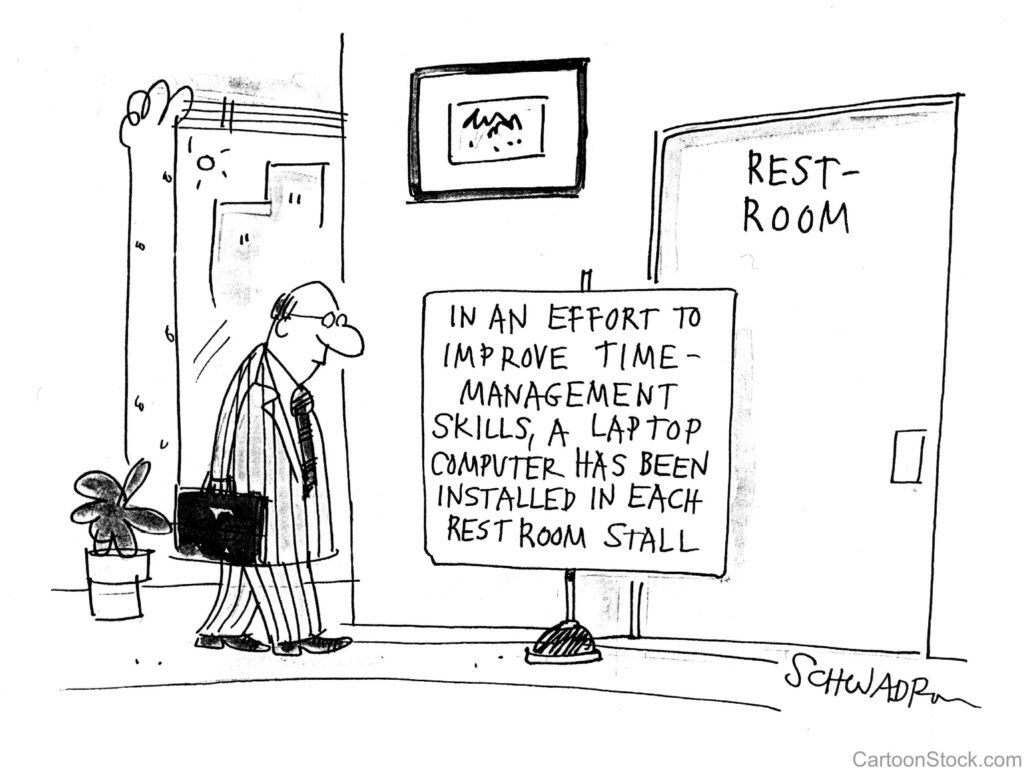
My family is teaching my six-year-old grandson, Benjamin, how to read and how to perform simple math. A key factor that determines the length of his lessons is how long he’s able to concentrate. He’s good for about 10 minutes, after which he needs to do something else (play games on the iPad, walk the dog). Then he’s ready for another lesson. His ability to focus will increase with age; that’s part of the maturation process.
As a matter of self-awareness, all of us should determine how long we can concentrate on a single event. Then we should experiment with the Pomodoro Technique, a proven time-management method, to find our optimum routine.
The Pomodoro Technique was made popular by Francesco Cirillo. When he was a student at Rome’s Luiss Business School he used a tomato-shaped kitchen timer to regulate his schedule (pomodoro is an Italian word for tomato). He would work for 25 minutes, take a five-minute break, then repeat. (An added benefit of the Pomodoro Technique is that it presupposes that you’ve made a list of important things to focus on.)
By toggling back and forth between focused work and times of repose, we can extend how long we can work because the break-time (a planned distraction) helps reset our focus and energy. It’s even more effective if the breaks are seen as rewards, not just a change of pace. (Allowing myself a bowl of Blue Bell ice cream is an utterly righteous incentive.)
There’s nothing magical about the 25-5 ratio. Customize the principle based on what is optimum for you.
First, experiment with your concentration level. How long can you read before losing focus? For how long can you respond to emails until your mind grows numb or begins to wander? Listen to a podcast? Work in the yard? Carry on a conversation? Your ability to concentrate will vary in different settings.
For instance, years ago I experimented with increasing how long I could read in one sitting. I’ve settled on this routine: I always read three or four books at a time, written on different topics by different authors. I read one for 20 minutes, then switch to another for 20 minutes, and so on. I take a break every 45 minutes and then resume. It helps to have multiple and diverse books to read because I can’t sustain reading one author on one subject for an extended period of time. Using this system, I can read for hours.
Your level of concentration can be increased. At the beginning of this post I mentioned that my grandson can only focus for about 10 minutes. As he ages, we’ll work on incrementally increasing his level until we discover his maximum. Isn’t it encouraging to know that concentration is a skill that can be developed, much like learning to play tennis or a musical instrument?
Here are some practical steps:
- Embrace the importance of being able to concentrate and focus. It can greatly enhance your productivity.
- Assess your current capacity to focus in various settings.
- Work on increasing your capacity to focus.
- Use the Pomodoro Technique to be more productive.
Having finished writing this post (30 minutes), I’m heading to the backyard to pick some figs.
An interesting article I read this week
A Summit of Their Own (published in the New York Times, January 24, 2021), tells the story of how a group of Nepalis and Sherpas recently succeeded in summiting the second tallest mountain in the world – K2 – in winter. It had never been done before and was the last great prize of high-altitude mountaineering.

Thanks Don. One of your most interesting and insightful posts. I’ll have to put some time into quantifying my concentration duration. Before I even start, however, I know that email can trump a tomato, sadly.
Thanks, Phil, for taking the time to write. You bring up a good topic: how distracting digital devices can be. Sometimes I need to mute my phone to lessen the distraction. See you soon.
Working as an admin. assistant, I found scheduled (required) breaks more annoying than restorative — I wanted to keep working! However, I was aware of bio-rhythms (e.g. lunch was a restorative time as I typed personal letters while eating; I got a 2nd wind around 3 p.m. when others experienced flagging energy). Following a personal schedule at home now, I have recognized the need to alternate simple tasks (handwashing dishes is a good meditative or brain-storming time) with those needing focus and accuracy. Don, your essay is so thought-provoking, I wanted to send to a friend who works from home and has long admitted to a struggle with feeling “scattered,” at every age. She likes to write, but not read, which seems an odd combo, to me. Maybe I could summarize the essay for her. She IS dyslexic, so I wonder if the alternating of tasks described here is universally helpful. What do you think? Thanks for any suggestions. Like you, I read a variety of books and like your idea of 20 min. per book. (My husband, a teacher, follows that structure in his nightly onscreen viewing, alternating educational with fiction.)
Sharon,
Thanks for sharing your thoughts. You seem to be a good thinker and a good, productive worker. Three cheers for you.
Simple tasks can be restorative. About three days a month I work all day at my vineyard. It is hard manual labor and very repetitive work. But it is cathartic. At the end of the day I am physically exhausted but mentally refreshed.
Your friend…likes to write but not read; that is an un usual combination. I don’t know enough about dyslexia to give an opinion on how it relates to work habits, but it seems that staggering work and relaxation would be good for all.
Take care and stay safe.
Don